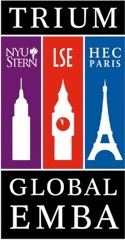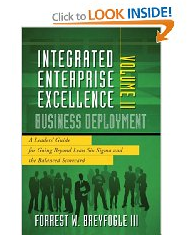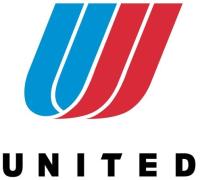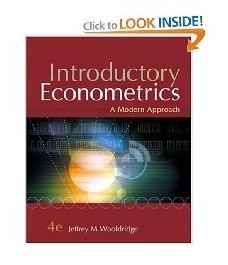Most of the brain's activities are not concerned with rational thought, they're about emotion. Most of what we see and say is scratching the surface of what's really going on, and often is at odds with what we really want.
So, how is a company supposed to deal with that?
Figure out what it takes to get a customer to say, "What kind of pie?"
Of course, the first step is to forget the customer is a customer. They're a person. Karl Marx would be nodding his head in agreement here, since "customer" is a term that embeds a person in a transactional relationship, in which non-transactional elements of the person get rubbed out, obscured, misinterpreted, and ignored.
Mistake.
 If you want to get your customer to ask about the pie (see link above), you need new systems for finding out who they are as people, and then creating an ecosystem of trust, alignment, values and value.
If you want to get your customer to ask about the pie (see link above), you need new systems for finding out who they are as people, and then creating an ecosystem of trust, alignment, values and value.
OK, that's the prescription. What's behind this voodoo medicine that will cure companies of their transaction-focused lens on the world?
Dr. Sandy Pentland developed a sociometer that tracks non-verbal communication. (Check out this link, and this one, too.) This is important within an organization because most communication inside a company is face-to-face, and so just isn't trackable. But it's the most critical to establishing culture, power relationships, and a common vision (see the section called "Organisation as a network of commitments" here). According to the MIT article I linked to above:
... the non-linguistic channels of communication that are measured by the sociometers may have started among our ancestors long before the evolution of language itself, forming a deeper, more primal way of understanding intentions, coordinating activities and establishing power relationships within the group.
"Half of our decision-making seems to be predicted by this unconscious channel," says Pentland, the Toshiba Professor of Media Arts and Sciences... The data gathered from the devices can be used not only to predict the outcomes of specific interactions between people, but even the relative productivity of different teams within a company. "This information is not in the organizational charts," Pentland says. "This human side is missing from all traditional measures" of how groups of people work together.
The strong correlations between unconscious forms of communication and the decisions that result strongly undermines people's perception that they are making choices based on rational, conscious factors, Pentland says.
But it's not simply non-verbal communication that creates a meaningful exchange between people. It is implied meaning. In the "What kind of pie?" comment in the first link, the implied meaning is not strictly non-verbal communication, but everything is communicated in that one question.
 England and Irelend. So close - and yet so far away.Implied meaning is one of the most challenging aspects of learning a new language. (See how this is discussed in a fascinating PDF targeting Japanese speakers learning English as a second language.) Even when the common language is English, the implied meaning delivered by one speaker can be lost on another if they come from different cultures (Northerners or Southerners in the US, Americans vs Brits, a Londoner talking with an Irishman, a subcontinental Indian speaking with a Native American Indian).
England and Irelend. So close - and yet so far away.Implied meaning is one of the most challenging aspects of learning a new language. (See how this is discussed in a fascinating PDF targeting Japanese speakers learning English as a second language.) Even when the common language is English, the implied meaning delivered by one speaker can be lost on another if they come from different cultures (Northerners or Southerners in the US, Americans vs Brits, a Londoner talking with an Irishman, a subcontinental Indian speaking with a Native American Indian).
The fact is that our internal landscape is only poorly expressed through words, and most of the gap between our true intention and our words or actions can be huge. Hence, the voice of the customer (VOC) programs of many companies can yield unactionable or wrong results. Customer driven innovation can lead to products no one will buy. And customer service representatives can inadvertently upset a customer by misunderstanding the customer's true intentions.
But to return to our original query: How do you get the customer to ask, "What kind of pie?" Simple: understand that their true objective is often driven by feelings, desires, aspirations, hopes, affirmations. Yes, customers may have other objectives: features and price do matter to an extent.
 Example time. I just bought something very cool: a new camcorder. The context for purchase was so much larger than features and price. The feeling that washes over me blends two sides of the same coin: I feel like I'm going to be a filmmaker/storyteller, and that I didn't foolishly buy the wrong product. (This may be rationalization, I admit.)
Example time. I just bought something very cool: a new camcorder. The context for purchase was so much larger than features and price. The feeling that washes over me blends two sides of the same coin: I feel like I'm going to be a filmmaker/storyteller, and that I didn't foolishly buy the wrong product. (This may be rationalization, I admit.)
The implied meaning for me? As I was tooling up for doing some vodcasting, I was really on a hero's journey. But instead of asking "What kind of pie?", I ended up asking, "What kind of carrying case do I need?" It's really the same question, because I had already made up my mind to love the camcorder.
Yes, the hero's journey, properly understood, results in upselling. But don't make my relationship with Canon about sales. After all, I'm not a customer. I'm a hero on a perilous journey. This time the destination was a camera with a soft case.
Tomorrow, it could be pie.
Update on Friday, September 25, 2009 at 9:13AM by
 Paul K. Ward
Paul K. Ward
Loic Lemeur, CEO of Seesmic and a colleague, tweeted yesterday about how a guy introduced himself to Loic as Loic's "concierge" for <x> brand. Loic called him out on him actually being a cheap sales guy.
This fits perfectly into the implied meaning topic, because a company wanting to position itself as a "concierge" to its customers makes a lot of sense, but will shoot itself in the foot if it promotes itself this way. A real concierge is not credible until his or her essential "conciergeness" has been proven. Granted, the crossed keys on their lapel indicate a level of training and professionalism, but even then, concierges have an obligation to actually perform for their guests. It is earned.
 A concierge actually earning the title.To call yourself a concierge to your customer's face is arrogant, and appears as an attempt to elevate yourself to a special kind of relationship with the customer. I know, I know, this is probably not the company's actual intent. They probably intended to establish a mental model in the minds of their prospects that would be both differentiating and humble: "We are here to serve you, and to even cater to you, and to deal with extraordinary requests." Not a bad concept. But the customer's perception is what matters.
A concierge actually earning the title.To call yourself a concierge to your customer's face is arrogant, and appears as an attempt to elevate yourself to a special kind of relationship with the customer. I know, I know, this is probably not the company's actual intent. They probably intended to establish a mental model in the minds of their prospects that would be both differentiating and humble: "We are here to serve you, and to even cater to you, and to deal with extraordinary requests." Not a bad concept. But the customer's perception is what matters.
Think of it this way. A single girl is sitting at a bar. A guy comes up and says, "Hi, I'm going to be your sensitive, attentive lover tonight." What girl wouldn't say, "Ick!"?
Consider another scenario. A single girl is sitting at a bar. A guy comes up and shows an interest - a genuine interest - in her. He listens. He actually seems to understand and respond to her in ways that show he cares. And, he's actually interesting. He has a story, a certain point of view, and is pleasant. You get the idea.
Now, in neither case is there any guarantee that a deal would be consummated. But a real test of whether the implied meaning in the interaction has been transmitted comes in the story that she tells to others about her visit to the bar.
 I study complexity theory, and in that science, the term of art is "emergent phenomenon". Loosely, a structure or effect that emerges from a complex, dynamic system (a meeting at a bar) that cannot be intrinsically and absolutely predicted from the state of individual elements of the system is emergent. You don't make ice by taking a pot of warm water and adding a little ice cube (= you can't change the state of a prospect to a client by stating that he's a client to your concierge). Instead, the dynamics of the pot of warm water need to be altered. It takes time (or an overwhelming externality, such as a freezer = economic need).
I study complexity theory, and in that science, the term of art is "emergent phenomenon". Loosely, a structure or effect that emerges from a complex, dynamic system (a meeting at a bar) that cannot be intrinsically and absolutely predicted from the state of individual elements of the system is emergent. You don't make ice by taking a pot of warm water and adding a little ice cube (= you can't change the state of a prospect to a client by stating that he's a client to your concierge). Instead, the dynamics of the pot of warm water need to be altered. It takes time (or an overwhelming externality, such as a freezer = economic need).
The difference between the water/ice and prospect/client metaphors, though, is that my colleague Loic is far less likely to become a client of brand <x> now that he's had a trust-damaging interaction with his "concierge". It's as though, by throwing an ice cube in a tub of warm water, the brand has pretty much guaranteed that the tub of water will never freeze.
This is why people aren't equivalent to physical systems. We are not just complex systems, we are complex adaptive systems. Self-described "concierges" beware: your presumptuous approach is destroying brand value.
But if you actually behave like a concierge, and refrain from calling yourself that, you might get that tub of warm water to change state to the beautiful crystalline lattice of ice. You might get the girl. And, best of all, you might actually figure out the deeper logic of business relationships: the best ones are not inherently transactional.
Yeah, it's hard being a sales guy.
 Saturday, February 27, 2010 at 12:10PM
Saturday, February 27, 2010 at 12:10PM 










